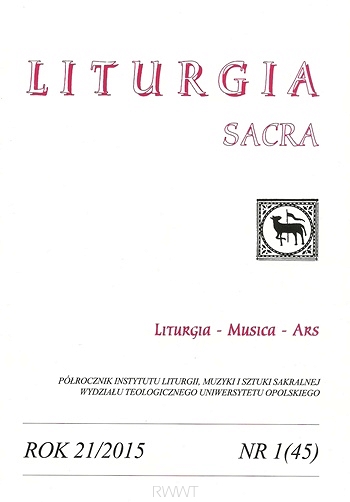Pasja według św. Mateusza (Water Passion after St. Matthew) Tana Duna i realizacja idei „Muzyki Organicznej”
The ‘organic music’ concept in Water-Passion by Tan Dun
Author(s): Joanna SubelSubject(s): Christian Theology and Religion, Music
Published by: Uniwersytet Opolski
Keywords: Passion; Passion after St. Matthew; Tan Dun; „organic music”; chinese music; Helmut Rilling; Project „Passion 2000”; chorale;
Summary/Abstract: The anniversary of the death of Johann Sebastian Bach in the year 2000 was not only an opportunity to honour the artist with concerts, but also to present Bach-inspired pieces from the late 20th century. Helmut Rilling, Head of Internationale Bachakademie in Stuttgart, approached four composers from various cultures around the world with the idea to create a passion. One of them was Tan Dun from China. Raised by his grandmother, who was living in the country, cut off from civilization, he gained his music experience from having contact with folk, shaman practices and playing primitive instruments. The music of nature, the rustling of leaves, the singing of birds, and above all water and the various sounds it can produce became the fabric of his music. A prolonged lack of access to European musical culture led to his using in the composition creating process not only traditional instruments, but also organic material such as water, stone or paper as sources of sound. This is why Tan Dun describes his music as ‘organic music’. In his Water-Passion, to the text of the Gospel of St. Matthew, the composer used, apart from traditional instruments, also the ‘play’ of water and stones. As it is common in Chinese folk practice, the singers not only sing, making use of aliquots, but also play ceramic wind instruments, and the choir generates sound by striking stones. The scene of the renouncement of Jesus by Peter, whose name etymologically means ‘rock’, was called by the composer the ‘Stone Song’. Transparent, water-filled bowls placed on the stage in the form of a cross are used not only to generate various acoustic phenomena, but are also part of the stage scenery, which is pointed out in the score. The composition of the performing ensemble is quite unique, as it includes: a soprano, a solo bass, a choir, a violin, a solo cello, three percussionists, who play multiple water instruments, and an electronic sound producer. The piece starts and ends with the sound of moving water.
Journal: Liturgia Sacra
- Issue Year: XXI/2015
- Issue No: 45
- Page Range: 177-199
- Page Count: 23
- Language: Polish
- Content File-PDF

